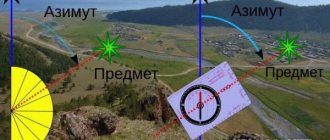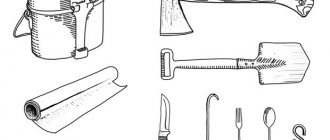- April 9, 2020
- Equipment
- Ivan Gresko
According to experts, hunting hazel grouse using decoys is considered very effective. To attract this bird, hunters use electronic or wind decoys. Some take with them branded products purchased from specialized stores, but there are also those who prefer to use homemade devices. This explains why the question of how to make a hazel grouse decoy is one of the most pressing. It is worth noting that making such a device is not difficult. Various materials are suitable for this purpose. You will learn more about what and how to make a hazel grouse decoy with your own hands from this article.
About the product design
Before you are interested in how to make a decoy for a hazel grouse, you need to have an idea about the structure of this luring device.
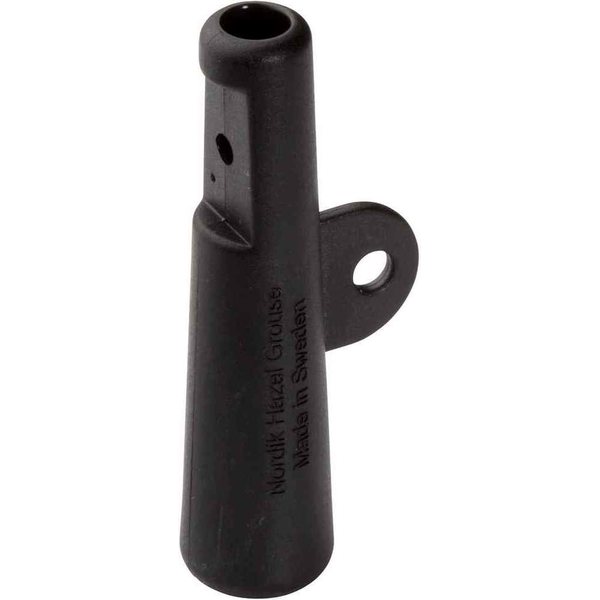
In general, craftsmen make decoys from a variety of materials, namely insulin syringes, tin, tubular bones, spruce branches and wires. In general, such a device should be a tube with holes through which you can control the sound. Read on to learn how to make a hazel grouse decoy.
Techniques used when hunting with decoys
You need to go hunting with a decoy alone. Moving slowly through the thicket, you should stop from time to time and lure the birds with the sound of a decoy. The interval between using the decoy should be approximately 100-150 meters, and the pause between sound luring should be from 5 to 10 minutes. The main task is not to listen to the takeoff of the hazel grouse. If it takes off from the ground, the sound is quite loud, but the start of a dive from a branch is almost silent. After the bird responds to the decoy, you need to closely observe the surface of the ground, because hazel grouse do not always fly in, but may even approach the source of the sound.
You should not use the decoy too often, as the bird may become wary. In response to one decoy sound there should be no more than two responses. The sound of both female and male individuals should be imitated. Moving deeper into the thicket, you can alternate imitation, which will lead to the bait of different individuals. The decoy should not be used if the hazel grouse has landed at a distance of several meters, as it may sense the deception.
In this situation, it is worth remaining motionless for a while, which will encourage potential prey to come closer, since hazel grouse are very curious, they will try to check who made the sound. Therefore, it is worth taking care of camouflage. The optimal place to wait for the bird would be dense bushes; a camouflage net would also be suitable.
The hunt should be conducted according to the following plan:
- moving 100-150 meters
- making a sound using a decoy
- waiting for the bird's response
- response to response if necessary
- silent waiting for hazel grouse, using camouflage
- ready to fire
If you use a decoy with your back turned to the direction of the bird’s flight, then there is a high probability that it will be more difficult for the hazel grouse to determine the falseness.
If you cannot see a hazel grouse flying up and landing on a tree, hunting binoculars can help you with this. We talk about how to choose binoculars for hunting in our article.
How to make a luring product from a syringe? Start
To make semolina you will need a plastic disposable syringe. According to experts, it has the optimal diameter and wall thickness so that you can reproduce the real sound of hazel grouse from it.

The decoy is made as follows. First you need to carefully cut off the part where the needle nose is soldered. As a result, you will end up with a 70 mm tube with edges protruding from one end. Next, you need to trim a regular pencil so that its thickness matches the diameter of the syringe.
Second step
Carefully cut a small section (1-2 cm) from the pencil and grind it off a little. The thickness of the flat should be between 3 and 5 mm. In general, this part should be beveled. After completing these steps, make the threshold. For this purpose, insert a cut piece of pencil into the tube. To be able to regulate the sound in hazel grouse semolina from a syringe, equip the tube with a hole. First cut the tube vertically, and then at an angle to this cut. At this stage you should be as careful as possible and make the cuts in one motion. Otherwise, your homemade decoy will end up with burrs, which will negatively affect its sound in the future. Then insert the ground piece into the syringe so that the flat part is directed towards the hole and does not protrude more than 1 mm.
Tips for hunting with decoys
To hunt hazel grouse with decoy to be successful, you need to remember and do the following things:
- Try not to make noise when moving from place to place, since the hazel grouse could fly up unnoticed and there is a possibility of frightening it off with noise;
- You should not respond to the sound of a bird more than twice, because this is unnatural and the bird may suspect deception;
- Try not to go into open areas and always use a camouflage net;
- If an active response from a bird is heard, but it does not follow the source of the sound, then you need to look for another individual, since this one is either busy eating or already has a mate.
Final stage
Now all you have to do is insert the plunger into the back of the syringe. Next, so that the sound of a homemade device matches the real sound of a hazel grouse, adjust it by comparing it with a recording of the sound of this bird. Then carefully cut off part of the piston so that the homemade decoy is closed with a cap. After completing these steps, the device is considered completely ready. To make it more convenient to use, make a small hole in the wide part of the insulin syringe and stretch a rope through it. As a result, you will be able to wear the decoy around your neck, freeing up your hands.
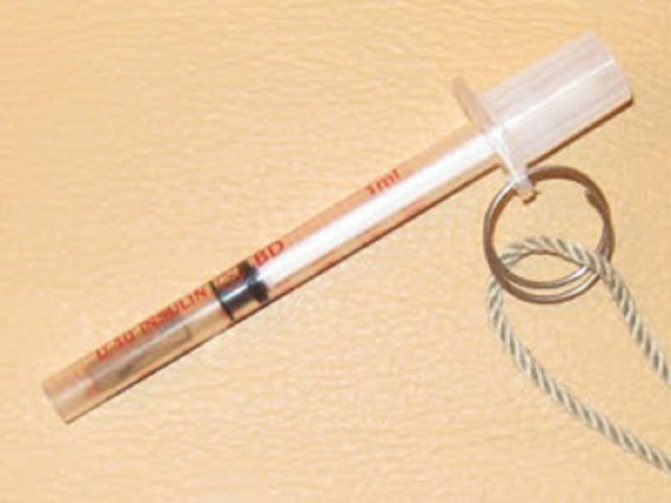
Made from tin. First way
This method of making a “pischika” is considered very common. It’s easy to make such a decoy. You will need a tin can.
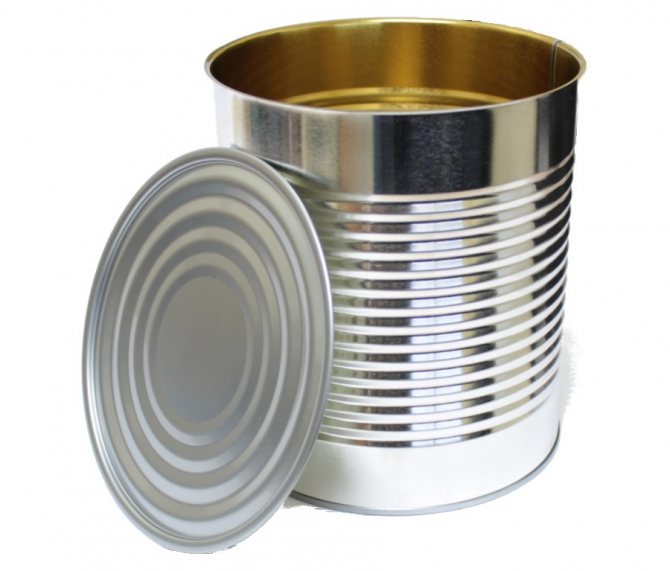
The advantage of this method is that consumables are widely available. Moreover, from one jar you can get more than ten products. First, cut 40 x 20 mm blanks from tin. Then start making parts. They should be in the form of a rectangle. At one end of it, leave two segments in the form of wings of 7 and 5 mm. They will need to be bent inward. First bend the 5mm one, and then the second one. The result should be a flat hole with a diameter of 0.5 mm. Air will flow through this hole. Now use three pieces of tin to make a plate that will need to be inserted into this hole. Judging by the reviews, some craftsmen make records from two pieces of tin. However, the sound is better in those decoys in which the records are made of three pieces. After completing these steps, use pliers to thoroughly crimp your structure and seal it. For this purpose, carefully wrap the workpiece with insulating tape. Some craftsmen use soldering at this stage. As a result, you will be left with a long tongue of tin. It should be bent around a rod with a diameter of 7 mm. You can use furniture fasteners or a nail. Now the decoy is ready. To adjust its sound, adjust the position of the tongue. To produce sound, you need to blow into the hole.
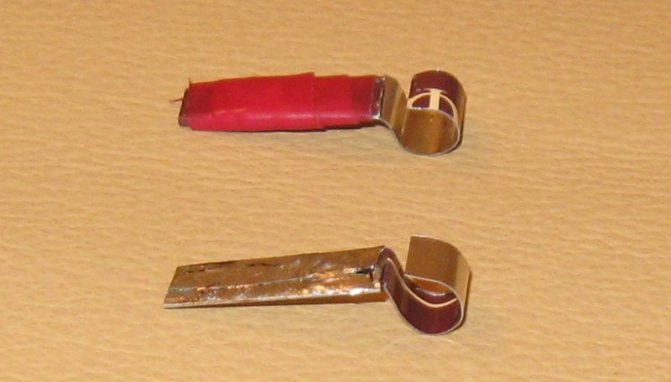
LiveInternetLiveInternet
How to make an electronic decoy with your own hands Both a regular and an electronic decoy are one of the most popular auxiliary elements How to make an electronic decoy with your own hands (for duck, quail, etc.) video
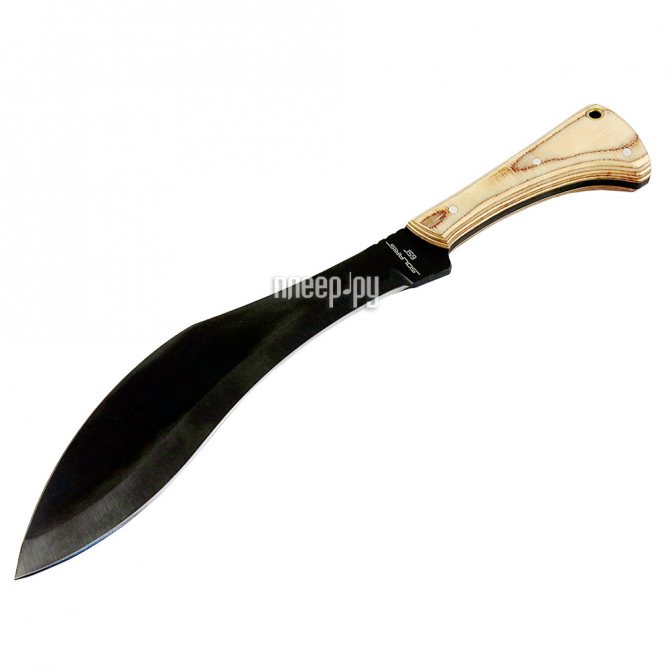
How to make an electronic decoy with your own hands
Both regular and electronic decoys are one of the most popular elements of auxiliary hunting equipment. However, if the owner of a manual decoy often requires remarkable talent in the ability to imitate the calling sounds made by various animals and birds, then an electronic decoy eliminates this problem. In addition, electronics do not create the extraneous noise and echo inherent in conventional decoys, and therefore their use is much more effective.
- 1 Electronic decoys are prohibited and allowed at the same time
- 2 Operating principle and advantages 2.1 Video: Geese fly to an electronic decoy
- 2.2 Video: how to attract a duck
- 3.1 Cassette decoys
- 4 How to make an electronic decoy with your own hands 4.1 Video: do-it-yourself electronic decoy
- 4.2 Power supply
- 4.3 Speaker
- 4.4 Amplifier
- 4.5 Player
Electronic decoys are prohibited and allowed at the same time
However, electronic decoys are still not widely used in Russia. The main reason for this is not the high cost of electronic options and not the moral obstacles of hunters, but a rather complex legislative conflict, due to which the opinion has become widespread that the use of electronic decoys in Russia is illegal. In fact, this statement is not true, since the ban on the use of any electronic devices capable of reproducing certain sounds in hunting is contained only in the 1988 order on the Model Hunting Rules, approved by the GlavUprom of the RSFSR hunting industry. At the same time, Resolution No. 18 of 2009, dedicated to the issues of obtaining hunting objects and issued by the Government of the Russian Federation, does not contain such a prohibitory norm.
Decoy Yeger 6M (225 voices) with active speaker Yeger (AVZM)
In other words, from a regulatory and legal point of view (which was at one time confirmed by the Supreme Court of the Russian Federation in relation to the above “Rules”), the first document in this part contradicts the norms of federal legislation.
Operating principle and advantages
The principle of operation of an electronic decoy is simple - and consists of reproducing sounds with a greater or lesser degree of identity made by a particular bird or animal. Including those whose frequency characteristics are extremely difficult or even impossible to reproduce on a regular decoy. All that is required in this case from the hunter is to choose exactly the entry that is not only most suitable for this type of game, but also takes into account the regional characteristics of the hunting location and the season in which it is held.
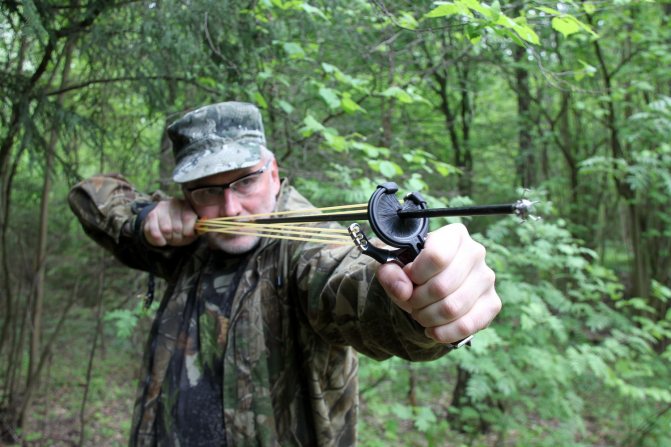
Decoy set in the thicket
It should be noted that the accuracy of the reproduced sound depends on two important parameters - the quality of the audio file recording and the technical characteristics of the decoy speaker.
The first parameter entirely depends on the manufacturer, since sounds in music libraries (even in the most modern third-generation devices) are not always an exact copy of the real calling cry of potential game. But even if the record in the decoy’s memory is completely identical, its music libraries should be updated regularly. The reason for this is a temporary change in conditioned reflexes (which occurs especially quickly in waterfowl), as a result of which a perfectly “working” call after one or two years may no longer attract, but, on the contrary, scare away a flock of geese or ducks.
Video: Geese fly to an electronic decoy
Much more problematic is the situation when the realism of any natural sound is greatly distorted due to insufficient (or outdated) technical capabilities of the decoy playback and recording equipment. It is impossible to correct this problem in any way - for which reason you will either need to purchase a more modern modification, or try to switch to a manual decoy.
Video: how to attract a duck
Types and their characteristics
As noted above, the quality of recording and reproduction of sounds by an electronic decoy are its fundamental characteristics - and the increase in the level of this quality quite predictably changed as electronic technology in general improved. As a result, over the entire historical period of use of these devices, three generations of them were created.
In fact, they were a variation of small portable tape recorders using magnetic tape as a carrier and recording sounds in mono (somewhat later - stereo) mode. This generation practically did not manage to at least significantly displace hand-made decoys, since they had much more disadvantages than advantages. These, first of all, included high vulnerability when used in wild conditions, an equally high level of energy consumption, prohibitive (for such low sound quality) price, a limited set of recorded sounds and extreme inconvenience in use.
Electronic decoy Hunterhelp Standard (MPU-5)
Decoys on electronic chips
These second-generation decoys, having not been the latest technology for quite some time, still occupy the lion's share of the domestic market and quite a significant share of the Western one. The recording medium in them is a built-in or removable chip, but the poor quality (considering the current level of development of electronics) continues to dominate the market, mainly due to powerful lobbying of the interests of their manufacturers. The main disadvantages of decoys of this generation include the high cost of removable chips, the difficulty (and often technical impossibility) of replenishing or updating the list of background recordings and the small number of them on the chip itself - usually containing only a set of sounds of only one specific type of bird or animal. In addition, by modern standards, the completely outdated circuitry of these devices, based on technology from the 70-80s of the last century, does not stand up to criticism. Its basis is the so-called pulse-width modulation, which is still widely used today - but only in products for which sound quality is absolutely not critical (musical toys, analog telephone speakers, amateur voice recorders, etc.).
Electronic decoys Hunterhelp
Only this type of electronic decoy can be considered not only completely modern, but also the only one acceptable in all respects for use in hunting. Its polyphony and digital principle of recording real voices of animals and birds allows you to absolutely accurately imitate any sounds, while absolutely freely and as often as you like, changing and supplementing their set in memory and enjoying the highest quality of completely realistic sound.
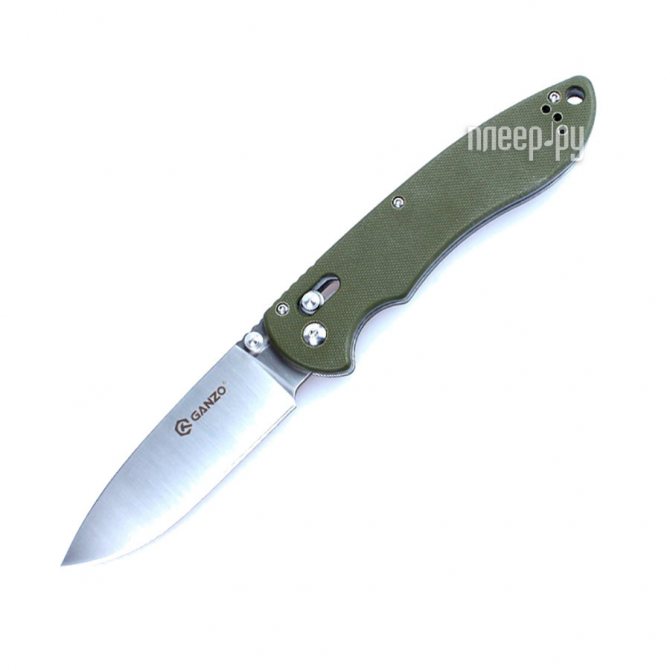
Decoy PLURIFON MICRO-RDP with memory card
How to make an electronic decoy with your own hands
The best modern decoys (both foreign and Russian-made) with a speaker power of about 20 W guarantee sound propagation over distances of up to 2 km and contain on average from 100 to 200 pre-installed absolutely realistic recordings of animal and bird voices. However, their prices, sometimes reaching 100 thousand rubles, are clearly not affordable for the Russian average person. At the same time, using a minimum set of basic knowledge about electrical engineering, it is quite possible to make an electronic decoy that is orders of magnitude cheaper on your own (while 15-20 years ago, such a task was only possible for very capable radio amateurs). All that is required for this is a reliable power source, a fairly high-quality speaker, a good amplifier, a regular MP3 player and a small case in which these devices can be placed.
Video: DIY electronic decoy
IMPORTANT! You should not skimp on speakers by trying to use something low-power (for example, from cell phones) - it is much more efficient to purchase a ready-made speaker. A prerequisite is the choice of a box or crate as a housing that will not become damp in conditions of high humidity and, moreover, will not let water inside.
So, let's go through in more detail all four main elements of a homemade electronic decoy.
A 12-volt battery with a capacity of 1.2-1.4 ampere-hours is quite suitable for this role. With a less powerful amplifier, a 6-volt amplifier may be suitable - which guarantees the availability of energy for any hunt that lasts long enough.

12 volt battery
One of the simplest options is a regular 20-watt alarm siren (with an extracted tone circuit) costing only about 200 rubles. For a normal connection to a digital playback device, you will need a flexible cable 5-7 meters long, and in the case of remote control of the digital device from a mobile phone via Bluetooth - even shorter.

Siren Pandora DS-530
Ideally, you just need to buy it. Although, if you want to save even more, you can assemble it yourself using, for example, a TDA1555Q microcircuit (the entire set for it, including mounting elements, will be selected by the seller in a radio store yourself, and the check amount will be about 500-600 rubles).
The most valuable and easiest to purchase and connect part of a homemade electronic decoy in the form of any MP3 player, thanks to the development of technology, gives the hunter a huge number of sound recordings, updated as often as desired and at the same time distinguished by impeccable quality.
Then all that remains is to connect these elements, compactly arrange and secure them in the box, and pre-set the device to the desired sound before going hunting.
Gallery: homemade decoys

Homemade electronic decoy from a speaker and a smartphone
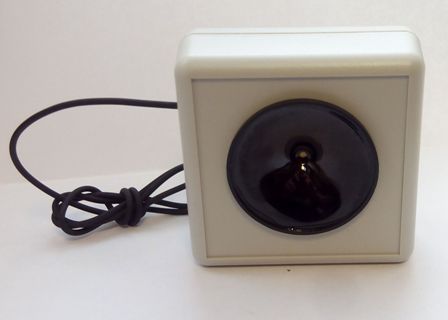
Homemade electronic decoy
Homemade electronic decoy from a speaker and a mobile phone
To summarize, several important conclusions can be drawn. The first - and main of them - is the legally justified opportunity and right to use electronic decoys when hunting. If there is a “lack of understanding” with the regulatory authorities, it will be easy to prove your case in court (which will not be difficult to win, given the solid legal framework working in favor of the hunter). The second is the opportunity - if you are short on funds or have a categorical reluctance to overpay - to produce a fully functional and, moreover, very high-quality 3rd generation decoy, spending an amount ten times less than the cost of a professional decoy. Finally, we can say with confidence that the use of an electronic decoy will greatly increase the chances of a successful hunt - at least for a person who is not experienced in handling manual decoys and does not believe that the use of modern electronic decoys in this particular case is morally unacceptable for a hunter.

Universal pocket decoy Taiga 2
Another option from a tin can
Cut two blanks from tin measuring 10 x 40 mm and 20 x 30 mm. Wrap the second piece around the first piece so that there is space left for air to pass through. Half a millimeter will be enough. To achieve this, when you bend, insert a thin plate of tin inside the small part. As in the first method, bend the long tongue around the 7 mm rod. Lastly, seal the product using adhesive tape. Now all that remains is to bend the tongue, adjusting the decoy. The disadvantage of this device is that you always have to use your hand to pinch the tab from the sides with two fingers.
What should you do next?
At this stage, the bone is degreased. Acetone is ideal for this purpose. Then equip one end of the bone with an even perpendicular cut, and the other end with an angled cut. Next, the workpiece is equipped with a sound hole. If the internal diameter of the bone is 4 mm, then the width of the hole should be within 2.5 mm. Like the semolina from an insulin syringe, this device should also have a threshold through which you can adjust the sound. Craftsmen make the threshold from wax. Using two drill diameters of the required size, this element is pushed into the bone so much that it protrudes a third beyond the hole.
Comments
- Mikhail 02/22/2016 at 01:18 Often with friends we go hunting for black grouse, last time I shot one, two birds each.
Answer - Vasya 10.18.2017 at 15:31
What is it like in the fall, why the hell did he write an article?Answer
- just a Bashkir 10.29.2017 at 15:00
There is also autumn mating. Not a fool wrote the articleAnswer
Add a comment
latest comments
Dmitry: Who knows for sure whether something matters for re-registration...
Leonid: Currently I am almost 75 years old. By law it is necessary to extend...
barraquda: come in “old man”...
Tatyana: Dear people. Well, take your pick, for God’s sake I don’t have room for...
Paul Hogan: Opening of autumn waterfowl hunting in the Penza region...
: When is hunting opening in the Tyumen region?…
Aler: In Kamchatka, in the spring I took a trip myself, 2 geese 5 drakes are the norm per day...
Maria: Hello, please tell me if my husband is renewing the ROC for Karabi...
Evgeniy: Hello, similar situation. I would like to know how she r...
Vadim: Tell me, a year before the license expires, you can...
Ivan: good question, quality)…
Dima: question...
Survey
In conclusion
At this stage you need to configure the decoy. For this purpose, equip a piece of wax with an air passage directed towards the hole. It will be more convenient for you to work with needles of different thicknesses. Carefully remove some of the wax and check how your product sounds. If the sound is not clear enough, then the air passage should be expanded a little more. Next, check your product again. Judging by the reviews, the hazel grouse decoy will sound cleaner if the internal cavity is clean. Therefore, rid it of various small particles.
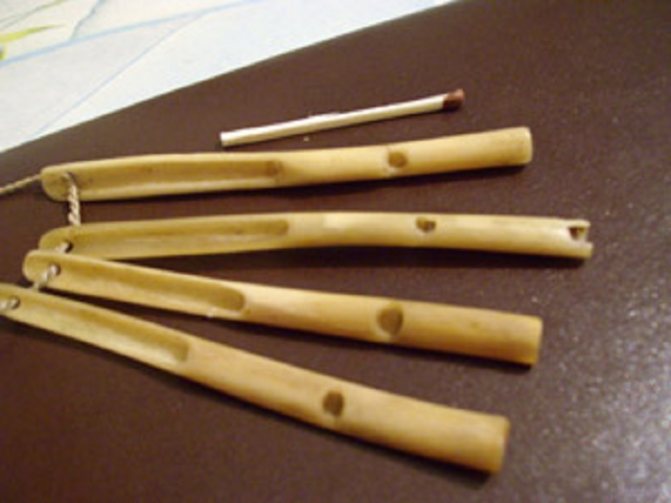
Necessary conditions for hunting with decoy
In early September, after the brood has split up, hazel grouse begin to look for a mate. This period lasts at least two months and ends only in November. Therefore, during this period, the hazel grouse regards the decoy as a possible partner and moves toward the sound, actively responding to it. When the pairs are formed, the decoy loses its relevance, since, responding to the decoy, the bird will no longer go to the source of the sound. Consequently, the optimal period for hunting is the time of active leaf fall.
If hunting takes place during the day, then you should avoid going out into the wind and precipitation, but the best time for hunting hazel grouse is morning or twilight. You can often find prey in places such as:
- spruce forests with a small number of deciduous trees
- cluttered, deep ravines
- zones along the shores of reservoirs, with dense growth of medium-height shrubs
The hazel grouse can rarely be found in high groves. Often, its habitat area is 400x400 square meters, which it carefully guards from its relatives.
How to make a hazel grouse decoy from a cap? What will you need for work?
It is worth noting that a very effective luring device is obtained from a medical needle cap. Before you start making, get the following:
- Injection kit. You will need exactly the cap.
- A stationery knife.
- Glue. It's best to use superglue.
- With a pencil. You can also cut the rod out of plastic.
- Abrasive and plasticine.
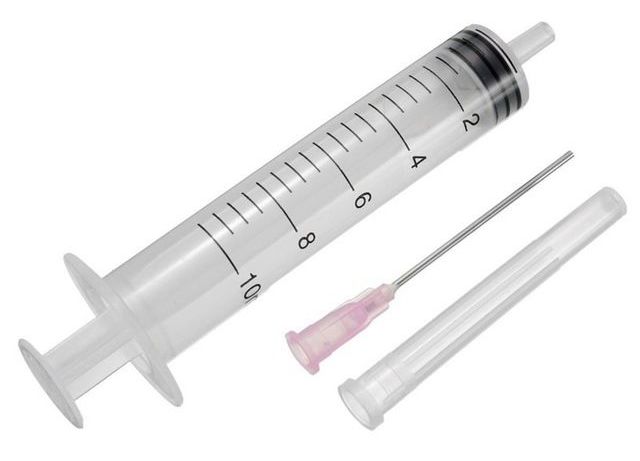
Algorithm of actions
First of all, cut off the sealed end part. Then use a utility knife to make a small hole with one cut so that no burrs form. Sharpen the pencil segment so that its diameter is 1.5 cm. The segment should have a slightly beveled shape - one of its edges should be larger. Make a 7mm flat in it. Its surface must be polished using an abrasive. Next, insert the polished section into the cap. It is important that the flat is facing the hole made. Lastly, you need to make a threshold from plasticine. You can adjust the sound by moving it inside the cap.






